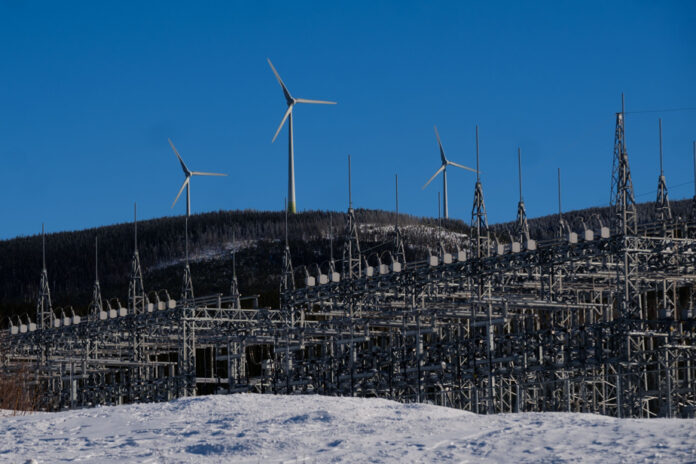Hydro-Quebec will buy an additional 1,500 megawatts of wind power, provided that future towers are built where there is still transmission capacity available on its network.
Saguenay–Lac-Saint-Jean, Rivière-du-Loup and Nicolet are the most favorable regions for the construction of the next wind farms, according to the mapping prepared by Hydro-Québec and made public Thursday by the Minister of the Economy, Peter Fitzgibbon.
A call for tenders will be launched shortly by Hydro-Québec for the purchase of 1,500 megawatts of wind energy, the minister announced. Last December, two calls for tenders totaling 2,300 megawatts were canceled to give Hydro-Québec time to specify where this new production should be located in order to maximize the use of the existing transmission network.
The Gaspé Peninsula, which already hosts significant wind power generation, is missing from the map of future wind power supplies because its transmission network is at maximum capacity.
The electricity required by the next tender must be available between 2027 and 2029.
In addition to Lac-Saint-Jean, Baie-Comeau and Rivière-du-Loup, expect to see new wind turbines growing in the Montreal region. It is possible to connect new generation in Salaberry-de-Valleyfield (300 MW) and Montérégie (250 MW).
The other locations identified by Hydro-Québec are Nicolet (400 MW), Des Cantons (250 MW) and Montmagny (200 MW).
In addition to meeting the location criteria, the promoters of future wind projects will also have to ensure local participation and include a 60% share of local content.
Other calls for proposals should follow, since the government’s intention is to double Quebec’s wind power generation capacity in the short term.
This capacity is currently 4000 megawatts. The day before the announcement of the upcoming call for tenders, Hydro-Québec had made public the choice of six projects resulting from its 2021 call for proposals. These projects announced on Wednesday will increase wind capacity by approximately 1,000 megawatts, for a total of 5000 megawatts in 2026. There will therefore remain 3000 megawatts more to be allocated to reach double the current wind capacity.
There is no lack of interest from developers of wind and other renewable energy projects since the most recent call for tenders for 780 megawatts attracted projects totaling 4,200 megawatts.
The average price that Hydro-Québec will pay for the projects announced on Wednesday and scheduled to be commissioned in 2026 is 6.1 cents per kilowatt hour.















